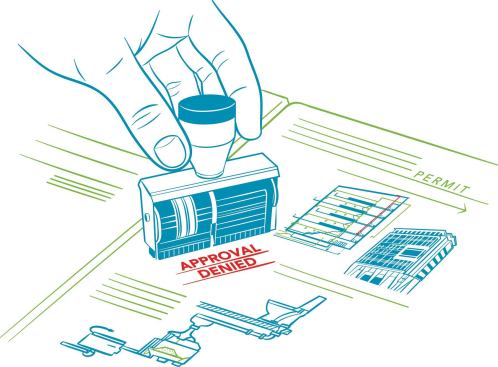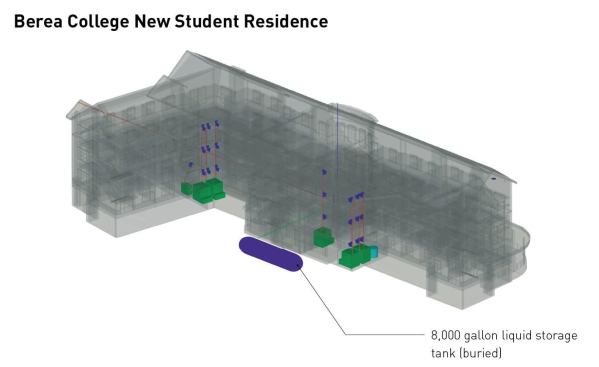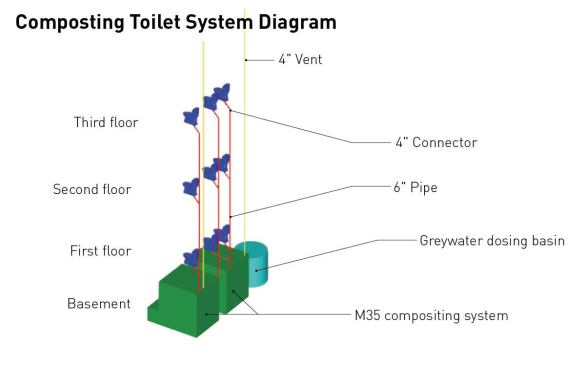Jameson Simpson
Technology isn’t hindering commercial projects from achieving net-zero water—rainwater collection, composting toilets, and leach fields are all centuries-old practices. “The real problem is not that we can’t design it: It’s that no one wants to permit it,” says Bill Worthen, AIA, president of Urban Fabrick Design in San Francisco.
Diminishing freshwater supply and aging infrastructure have brought water independence—in which buildings capture, treat, and distribute their own potable and nonpotable water on site—to the forefront of discussion. And the International Living Future Institute (ILFI) further highlights net-zero water as one of the seven mandatory petals of the Living Building Challenge (LBC). Though exemptions to net-zero water are possible due to geological and site constraints, says Eden Brukman, former ILFI vice president, “Exceptions are not allowed based on regulatory limitations, with the reason being that there are already examples of success using conventional, educational, and unique solutions.”
Regulatory obstacles are generally attributable to a lack of precedence, existing infrastructure mandates, reclamation and distribution methods, and system maintenance. Design teams pursuing net-zero water often face the arduous burden of being the first to seek approvals in the project’s jurisdiction. Appeals can involve local building officials, water- and sewer-utility companies, the county health department, the state department of environmental quality (DEQ), and the state environmental protection agency.
Identifying the appropriate regulatory agencies and walking them through the design process can be difficult, says Chris Minnerly, AIA, principal with Design Alliance Architects, and project architect as well as principal-in-charge of the Phipps Conservatory Center for Sustainable Landscapes (CSL) in Pittsburgh, which is targeting Living Building status. Appropriately sizing the natural-treatment systems can also be tough, depending on the jurisdiction. For the Oregon Sustainability Center in Portland, Jon Gray, principal in the local office of Interface Engineering, could size its blackwater-treatment system based on a third of typical DEQ requirements—5 gallons of wastewater per person per day—in part because the project had a backup municipal sewer connection. For one of Gray’s projects in Pennsylvania that was considering becoming net-zero water, local officials weren’t as flexible. As a result, the project would have had “a huge planted shelf system that they probably would have to feed part of it with effluent, and the rest of it would lay dormant because it was oversized,” Gray says.
Municipalities also typically require projects to tie into the municipal water and sewer system, regardless of whether you plan to use it, says Pete Muñoz, a senior engineer at Natural Systems International, an ecological planning and design firm in Santa Fe, N.M. The backup system may absolve design teams from sizing on-site treatment systems for the 100-year event, he says; but the cost to connect and maintain a grid connection can be prohibitive.
Such was the case for Hood River Middle School in Hood River, Ore. After eight months of appealing to state DEQ officials for a variance, says project architect Chris Brown, AIA, of Opsis Architecture in Portland, Ore., city officials still mandated a 300-foot-long connection to the municipal grid. “It would have been a way to do net-zero water if we had enough money,” Brown says. “Eventually, the political situation was such that we were arguing to keep the solar panels and go LEED Platinum. We said, ‘All right, we won’t argue too hard for doing wastewater treatment.’ ”
On-site wastewater collection and distribution methods present more regulatory obstacles. “Cities that don’t have a regulatory agency that deals with on-site dispersion will punt it to the State,” Muñoz says. “The issues with net-zero-water projects aren’t that you’re not meeting some regulations—it’s just that no regulations exist.”

![Securing approvals for the net-zero-water Center for Sustainable Landscapes at Phipps Conservatory was challenging because “it didn’t match things that are on their [code officials’] books,” says Chris Minnerly, Design Alliance Architects principal.](https://architectmagazine.stg.zonda.onl/wp-content/uploads/sites/5/2025/06/tmp700-2etmp-tcm20-1265382.jpg?w=567)

